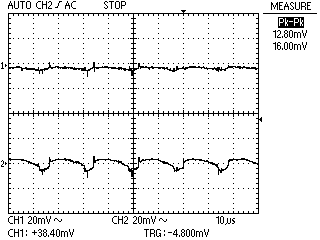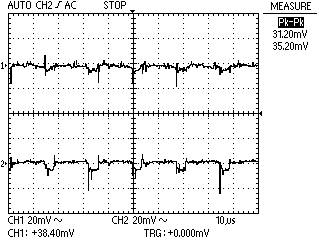 |
||
|
||
| ||
We proceed with our review of power supply units. Today we'll review Hiper (manufactured by Taiwanese High Performance Group) and L&C (manufactured by Taiwanese L&C Technology group) PSUs. I was offered the following models:
from the former manufacturer and
from the latter. Running a few steps forward, it should be noted that despite the seeming similarity of the models, which comes to mind from the names of Hiper PSUs, these power supply units are actually absolutely different — it applies not only to the exterior, but to their operation as well. To begin with, HPU-4K480, HPU-4R480, and HPU-4S480-EU power supply units are export models, which stand out against the other PSUs by a considerable range of available options. Exterior, bundleR-indexed model has a red case with mat surface; K-indexed model has a black metal case, its surface is almost like a mirror; logically, the manufacturer put the S-indexed model into a silver-colored case. All these power supply units are equipped with a 120mm fan; and the HPU-4R480 fan is illuminated with red. As the exterior of these models is identical (except for the above reservations), we'll publish label photos only (marking PSU power capacities) and the general view of one PSU
1 - 20+4 formula means that 4 pins can be "detached" The HPU-4R480 bundle includes two power cords (one of them is a 3-pin cord) and a user's manual. To all appearances, scarce options are compensated by the exterior. HPU-4K480 offers a wider variety: besides the above mentioned components, it comes shipped with an additional 80mm fan (to be installed into a system unit) as well as a 20-24 pin adapter for the main power connector. HPU-4S480-EU comes shipped with a single power cord (Euro standard), an additional 80mm fan, a user's manual, and two stylish sleeved IDE cables. All models have their bundles packed into such boxes (of course, the label color and inscriptions correspond to each given model):
HPU-4K480
 +12 V bus pulsations are about 20.8 mV, +5 V bus - max. 16.8 mV. That's how we tested the output voltage stability: we applied a load to each bus, ranging from the minimum (provided in the table) up to maximum at 1A/µs steps. All the buses were loaded simultaneously, that is we imitated the minimum, typical, and full load (in PSDG terms). The cycle of loads was applied to the PSUs for two hours, we took the readings five times, the results published below are mean values of the five readings. Voltage stability test results: the minimum measured value on the +12 V bus is +11.78, and the maximum value is +12.25 V. The minimum value on the +5 V bus is +4.76, maximum — +5.21 V, +3.3 V bus — +3.11 and +3.48 V correspondingly. Note that according to PSDG, the output +12/+5/+3.3 V deviation may amount to ±5% (+11.40~+12.60 V, +4.75~+5.25 V, and +3.14~3.47 V), but there are two reservations: firstly, deviations at the peak load of the +12 V bus may amount to 10%; secondly, ATX specifications have tougher requirements to the admissible 3.3 V deviation limits: ±4% instead of ±5, mentioned in Power Supply Design Guide). The +3.3 V bus of the unit obviously failed the test. However, considering the little importance of this voltage as well as the measurement error, we shouldn't take this insignificant excess too seriously. HPU-4R480 +12 V bus pulsations are about 25.6 mV, +5 V bus - max. 16.8 mV. Voltage stability test results: the minimum measured value on the +12 V bus is +11.40, and the maximum value is +12.42 V. The minimum value on the +5 V bus is +4.89, maximum — +5.40 V, +3.3 V bus — +3.22 and +3.40 V correspondingly. This unit keeps within the admissible limits of voltage fluctuations, though the minimum value of the +12 V bus matches the threshold value. HPU-4S480-EU +12 V bus pulsations are about 12.0 mV, +5 V bus - max. 21.6 mV. Voltage stability test results: the minimum measured value on the +12 V bus is +11.77, and the maximum value is +12.29 V. The minimum value on the +5 V bus is +4.75, maximum — +5.29 V, +3.3 V bus — +3.14 and +3.41 V correspondingly. You should pay attention to the "limping" +5 V bus - the minimum and maximum values exceed the limits. The remaining three models come in a retail package, they don't have expensive boxes and come shipped in cardboard boxes covered with polypropylene (rather stylish). Unlike the three previous models, these solutions can boast neither of charming exterior nor of a wide range of options — they are made of regular metal. All these PSUs, except HPU-3S350, have two 80mm fans (one is on the bottom, the other is on the rear panel). The only exception has just a single 80mm fan on the rear panel.
These three units differ from the export models by a larger variety of pin numbers:
1 - 20+4 formula means that 4 pins can be "detached" HPU-3S350 +12 V bus pulsations are about 10.4 mV, +5 V bus - max. 16.8 mV. Voltage stability test results: the minimum measured value on the +12 V bus is +11.77, and the maximum value is +12.42 V. The minimum value on the +5 V bus is +4.83, maximum — +5.29 V, +3.3 V bus — +3.11 and +3.31 V correspondingly. This PSU exceeds the limits for +5 and +3.3 V buses, but these deviations are insignificant. HPU-4S525 +12 V bus pulsations are about 31.2 mV, +5 V bus - max. 35.2 mV. Voltage stability test results: the minimum measured value on the +12 V bus is +11.78, and the maximum value is +12.42 V. The minimum value on the +5 V bus is +4.93, maximum — +5.24 V, +3.3 V bus — +3.15 and +3.57 V correspondingly. The only voltage that can be subject to criticism in this case is +3.3V - the upper limit is exceeded by 0.1 V. HPU-4S425 +12 V bus pulsations are about 24.0 mV, +5 V bus - max. 22.4 mV. Voltage stability test results: the minimum measured value on the +12 V bus is +11.57, and the maximum value is 12.63 V. The minimum value on the +5 V bus is +4.77, maximum — 5.17 V, +3.3 V bus — +3.15 and +3.45 V correspondingly. The +12 V bus voltage slightly exceeding the upper limit can hardly qualify for a major grudge. And finally, let's proceed to LC power supply units, which look really dull (in direct and figurative senses of the word). All the three units offer no bundle options, their cases are made of regular plate. Except for LC-B350ATX, the air vents of the exhaust fans are not covered by grilles, they are just punched in metal (it's vice versa in the first case). Only LC-B350ATX has two fans (80 mm) among these three PSUs, the other two units have only exhaust fans.
Being middle-end solutions by their exterior, these power supplies are equipped with "old" sets of connectors:
LC-250-ATXThis unit refused to startup - both under load and without it (which is acceptable, by the way), but the question is whether we should be sorry: 250 W PSU will hardly be so desperately needed. LC-B300-ATX +12 V bus pulsations are about 24.0 mV, +5 V bus - max. 17.6 mV. Voltage stability test results: the minimum measured value on the +12 V bus is +11.27, and the maximum value is 12.28 V. The minimum value on the +5 V bus is +4.68, maximum — +5.16 V, +3.3 V bus — +3.01 and +3.35 V correspondingly. Alas, this power supply unit has demonstrated candidly weak results - +12 V and +3.3 V buses slump very much, which makes us doubt the capacity of this unit to be used in critical systems. LC-B350-ATX +12 V bus pulsations are about 28.0 mV, +5 V bus - max. 4.8 mV. Voltage stability test results: the minimum measured value on the +12 V bus is +11.42, and the maximum value is +11.89 V. The minimum value on the +5 V bus is +4.64, maximum — +5.04 V, +3.3 V bus — +3.09 and +3.35 V correspondingly. We can see that all the three buses are weak - +12 V unit does not provide the nominal voltage even under perfect conditions, +5 V goes too much down as well as the +3.3 V bus. It's too early to make unfounded accusations that all L&C PSUs leave much to be desired - three units are not enough. But perhaps we'd better be careful with these models. ConclusionsConsidering the measurement error, we can assume that HPU series power supply units - in all their modifications (both retail and export) - look well and can be used in systems of various levels (in terms of power). What concerns L&C PSUs, in my opinion this question needs additional analysis, because the three units reviewed are not encouraging and make us pause over expedience of their usage without thorough analysis of their working conditions. To be continued...
Write a comment below. No registration needed!
|
Platform · Video · Multimedia · Mobile · Other || About us & Privacy policy · Twitter · Facebook Copyright © Byrds Research & Publishing, Ltd., 1997–2011. All rights reserved. | ||||||||||||||||||||||||||||||||||||||||||||||||||||||||||||||||||||||||||||||||||||||||||||||||||||||||||||||||||||||||||||||||||||||||||||||||||||||||||||||||||||||||||||||||||